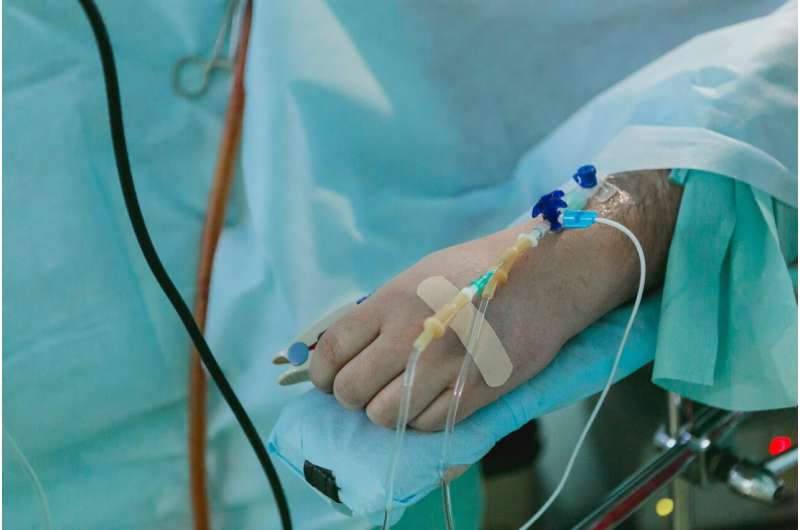This article has been reviewed according to Science X's editorial process and policies. Editors have highlighted the following attributes while ensuring the content's credibility:
fact-checked
proofread
Two-thirds of staff, residents of long-term care facilities in England developed COVID-19 during early years of pandemic

Two-thirds of staff and residents in long-term care facilities for older people across England were infected with COVID-19 during the first two years of the pandemic, according to new findings from the Vivaldi study being presented at this year's European Congress of Clinical Microbiology & Infectious Diseases (ECCMID) in Copenhagen, Denmark (15-18 April).
The unique study by Dr. Maria Krutikov from UCL's Institute of Health Informatics, London, UK and colleagues used serological surveys, testing blood samples for SARS-CoV-2 antibodies against the nucleocapsid protein—which are only produced in response to infection and not vaccination—to estimate what percentage of residents and staff had a prior COVID-19 infection between March 2020 and March 2022.
Residents in long term care facilities experienced a disproportionately high burden of SARS-CoV-2 infection and death over the first year of the COVID-19 pandemic in many countries across Europe, North America, and Asia.
In England, despite representing less than 1% of the total population, care home residents accounted for approximately a third of all COVID-19-related deaths over the first two waves. However, the true level of infection is unknown because diagnostic testing using PCR was limited. Therefore, most infections that occurred in the first few months of the pandemic were not confirmed and have not been recorded.
To learn more, UCL researchers analyzed data from the VIVALDI study that has been monitoring infection and immunity to SARS-CoV-2 in long term care facilities for older people in England since March 2020.
Regular blood samples from consenting staff and residents were tested for antibodies against COVID-19. Antibody results were linked to data from the national PCR or lateral flow test (LFT) routine screening program in long-term care homes which tested all staff weekly, and residents monthly, and more frequently if there was an outbreak or development of symptoms, up to March 2022.
Between March 22, 2020, and March 22, 2022, 3,385 staff (average age 47 years) and 1,794 residents (average age 87 years) in 220 facilities who underwent at least one antibody test were included in the analysis.
As participants were in the care homes for differing periods of time, this affected their risk of acquiring SARS-CoV-2, so the analysis accounted for time at risk. Because the entry and exit dates for participants were unknown, the time in the facility (the time at risk) was based on test dates.
During the two years, 2,780 individuals had at least one positive antibody or PCR/LFD test, 998 (35%) residents and 1,782 (64%) staff, suggesting they had been previously infected.
The average time at risk was 547 days in the whole group, and was lower in residents (439 days) than in staff (610 days).
The infection incidence rate was significantly higher among residents (0.13 cases /100 person-days than staff [0.11 cases /100 person-days])
Over two years in the long-term care facility, the cumulative incidence of infection among all participants was 65% (accounting for varying time at risk).
"The comparable incidence of infection between the general population (70% by March 2022) and our care home population of first wave survivors supports reports of high infection incidence in long-term care facilities," says lead author Dr. Krutikov. "The incidence is likely to have been higher overall, given the large number of residents who died from COVID-19 before sampling commenced."
She continues, "As prior infection and vaccination protects against severe infections, the predominance of previously-exposed residents may explain the recent decline in SARS-CoV-2 deaths in long-term care facilities.
"This study provided a unique opportunity to look at the true rate of infection in long-term care facilities during the pandemic. Ongoing surveillance of infection and immunity in these settings is important for informing policy decisions around screening and revaccination as we learn to live with the pandemic."
Despite the important findings, the study had several limitations, including that it was an observational study and under-ascertainment of infections was likely because individuals who died in the first wave before recruitment for blood sampling could not be included.





















